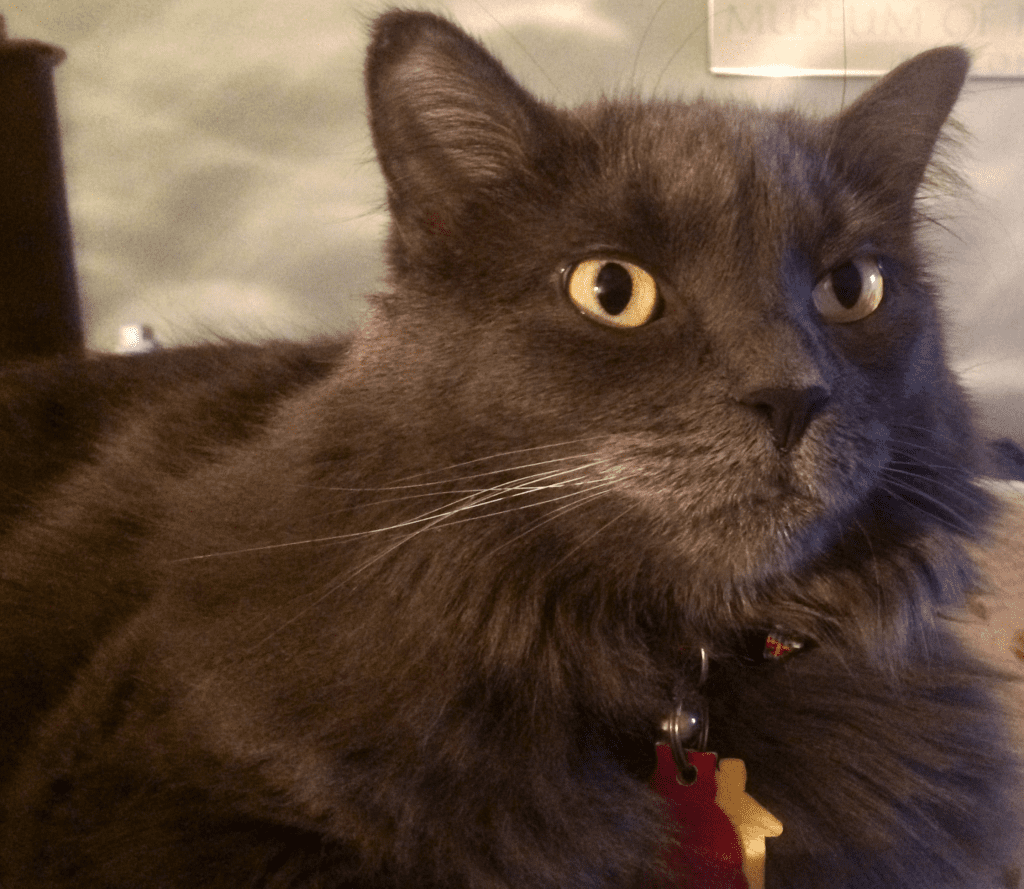
Imagine a cat so graceful it seems to glide through rooms, its silvery-blue coat shimmering like moonlight on water. The Nebulung cat, a breed shrouded in allure, is more than just a pretty face. From its fog-inspired name to its soulful green eyes, every detail tells a story. But how much do you really know about this enigmatic feline? Buckle up—we’re dissecting every facet of the Nebelung, from whiskers to tail.
1. The Nebelung Cat: Identity & Origins
What’s in a Name?
The term “Nebelung” (pronounced Neb-uh-loong) stems from the German Nebel (“mist”) and the medieval epic Nibelungenlied. This poetic name reflects the breed’s mist-like coat and mythical aura.
Aliases:
- Long-Haired Russian Blue: Highlights its genetic ties to the Russian Blue.
- Gentle Ghost Cat: References its quiet, observant demeanor.
A Modern Creation with Ancient Roots
Unlike ancient breeds like the Siamese, the Nebelung is a 20th-century invention. Here’s how it unfolded:
- 1984: A black domestic shorthair named Elsa mated with a Russian Blue in Denver, Colorado, producing a long-haired blue kitten named Siegfried.
- 1986: Another litter yielded Brunhilde, Siegfried’s sister. Breeder Cora Cobb recognized their uniqueness and began developing the breed.
- 1997: The International Cat Association (TICA) granted official recognition.
Key Fact: The Nebelung’s lineage is meticulously documented, making it one of the few breeds with a traceable origin story.
2. Anatomy of Elegance: Physical Traits Explored
Size & Proportions
- Weight: Males: 10–12 pounds; Females: 8–10 pounds—a notable difference that emphasizes their lean, athletic build.
- Height: 9–11 inches at the shoulder, with a body length of up to 18 inches (excluding the tail).
Standout Features
Coat: The Nebelung’s Crowning Glory
- Color: Blue-gray with silver tipping, creating a “halo” effect.
- Texture: Double-layered—soft, silky guard hairs over a dense undercoat.
- Length: Semi-long, with feathering on the tail, chest, and hindquarters.
Fun Fact: Their coat darkens slightly with age, much like a fine wine maturing.
Eyes: Windows to a Quiet Soul
- Color: Vivid green, deepening from pale jade in kittens to emerald in adults.
- Shape: Almond-shaped, set wide apart for an alert yet serene expression.
Ears & Tail: Subtle Drama
- Ears: Large, pointed, and tilted forward—perfect for capturing faint sounds.
- Tail: Plumed and luxuriant, often compared to a feather duster. It’s a balancing tool during acrobatic leaps!
3. Personality Decoded: The Nebelung’s Inner World
The Introvert’s Perfect Companion
Nebelungs are selectively social. They form intense bonds with 1–2 family members but remain aloof with strangers. Key traits include:
- Loyalty: Shadows their favorite human, often perching nearby to observe.
- Intelligence: Masters puzzle feeders and learns tricks faster than most breeds.
- Playfulness: Enjoys chasing laser pointers or batting at feather toys—but on their terms.
Quote: “Nebelungs are like librarians: quiet, wise, and happiest in calm environments.” — Feline Behaviorist Dr. Linda P. Case.
Communication Style
- Vocalizations: Soft chirps and trills, rarely loud meows.
- Body Language: A raised tail signals happiness; flattened ears indicate stress.
Pro Tip: Nebelungs thrive in homes with consistent routines—sudden changes can unsettle them.
4. Health & Longevity: What Owners Must Know
Lifespan
With optimal care, Nebelungs live 12–16 years, sometimes exceeding 18 years.
Common Health Issues
- Dental Disease:
- Risk: High due to genetic predisposition.
- Prevention: Annual dental cleanings and daily tooth brushing.
- Obesity:
- Risk Factors: Sedentary lifestyle + overfeeding.
- Healthy Weight: Keep males under 12 lbs, females under 10 lbs.
- Hypertrophic Cardiomyopathy (HCM):
- Screening: Annual echocardiograms recommended for breeding cats.
Vet Insight: “Nebelungs are generally healthy, but their Russian Blue ancestry means monitoring for HCM is crucial.” — Dr. Karen Becker, DVM.
5. Caring for Your Nebelung: A Step-by-Step Guide
Diet: Fueling Feline Grace
- Protein-Rich Food: Aim for 40–50% protein (e.g., chicken, turkey).
- Portion Control: Split into 3–4 small meals to prevent overeating.
Grooming: Mastering the Art
- Brushing: 3 times weekly with a stainless-steel comb to prevent mats.
- Bathing: Only if greasy—use a mild shampoo and blow-dry on low heat.
Hack: Place a cardboard scratcher near their favorite nap spot to maintain claw health.
Environmental Enrichment
- Toys: Puzzle feeders, feather wands, and crinkle balls.
- Vertical Space: Cat trees with perches satisfy their climbing instincts.
6. Is a Nebelung Right for You?
Ideal Owners
- Quiet Households: Avoid homes with loud children or frequent parties.
- Work-From-Home Professionals: Nebelungs crave companionship during the day.
- Allergy Sufferers: Their low dander production reduces allergic reactions.
Red Flags
- Busy Families: Noise and chaos stress Nebelungs.
- First-Time Owners: Their sensitivity requires experienced handling.
FAQs: Nebelung Cats Demystified
1. How rare are Nebelung cats?
Only a few hundred exist worldwide, primarily in the U.S. and Europe.
2. Do Nebelungs shed a lot?
Minimally, thanks to their dense undercoat. Seasonal shedding occurs in spring/fall.
3. Can Nebelungs be left alone during workdays?
Yes, but limit alone time to 6–8 hours. Provide interactive toys to prevent loneliness.
4. Are Nebelungs good with other pets?
They tolerate calm dogs or cats but prefer being the sole pet.
5. What’s the difference between a Nebelung and a Russian Blue?
Nebelungs have semi-long hair; Russian Blues are short-haired.
Final Thoughts: Why the Nebelung Captivates
The Nebelung cat isn’t just a pet—it’s a living paradox: serene yet playful, rare yet approachable, modern yet timeless. Whether you’re mesmerized by its misty coat or charmed by its quiet loyalty, this breed offers a companionship unlike any other. Ready to embrace the mystique? The Nebelung awaits.
Sources: TICA Breed Standards, 2023; “The Domestic Cat” by Turner & Bateson; Interviews with certified Nebelung breeders.